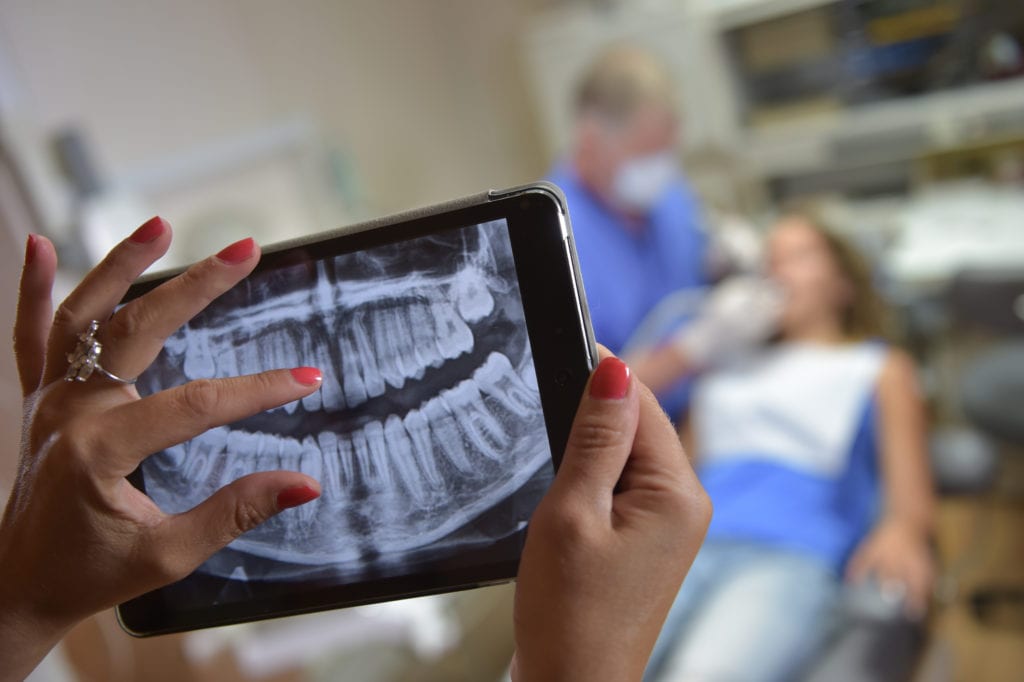Dr. Nechama Brand and her team offer simple and surgical tooth extractions for patients in Chicago, IL. Patients may require this general dental treatment to remove extra teeth, extract impacted wisdom teeth, and prevent overcrowded teeth. We will also recommend a tooth extraction as a last resort to remove infected teeth.
In addition, sometimes teeth incur damage from periodontal disease or an injury. Removing one or more teeth because of damage or infection can leave gaps between them. We can provide dental implants and implant-secured restorations to help you renew your mouth.

Removing Wisdom Teeth
Most patients develop their wisdom teeth or third molars when they are in their late teens or early twenties. It has become common practice to remove wisdom teeth because of the many problems they can cause.
If a wisdom tooth develops incorrectly, we will need to remove it to prevent crooked and overcrowded teeth. We will also surgically remove impacted wisdom teeth. Sometimes they will harm the adjacent teeth. Wisdom teeth are also difficult to keep clean since they are far in the back of the mouth.
Many people simply skip flossing around them or don’t take the time to brush them. This will lead to tooth decay. Sometimes, if a patient elects to keep their wisdom tooth, they will feel tooth and gum pain, swelling gums, and other dental health issues.
In the end, simply extracting the wisdom tooth helps treat these symptoms and prevents further oral health problems. However, if they have come in straight and you have enough room for them, you do not have to remove them. As long as they are not causing problems and you can properly clean them, you can live your entire life with your wisdom teeth.
Types of Dental Extractions
Before your tooth extraction, Dr. Nechama Brand will take x-rays of your teeth and jaw to determine a treatment plan. Patients who require wisdom teeth removal will need a panoramic x-ray so that we can see a complete image of all their teeth. X-rays allow us to assess the condition of your teeth to determine which ones are causing problems.
We can complete two main types of tooth extraction treatment, simple and surgical:
Simple Extraction
If the tooth is visible from the gum line and in one piece, we can typically perform a simple extraction. The procedure is usually as simple as loosening the tooth and pulling it out. The dentist will use a dental tool called an elevator to loosen the tooth. Then, they will slowly and gently remove the tooth with forceps. This procedure usually only requires local anesthetic.
Surgical Extraction
A surgical tooth extraction is a more invasive procedure for more complex cases. If a tooth has not fully erupted through the gums or is broken, a person will require surgery to remove it. The dentist will make an incision on the gums to expose the tooth or the tooth. The dentist may need to cut the tooth into multiple pieces so they can remove it quickly. In some cases, we may need to cut the bone surrounding the tooth for access. Depending on the case’s complexity, a surgical extraction will require local anesthesia and dental sedation or general anesthesia.
Recovering from a surgical tooth extraction and a simple extraction is different. After the procedure, there is more discomfort and swelling involved with surgical extraction. Both types will require caring for the open socket.
Tooth Replacement Options After Tooth Extraction
After an extraction, replacing the tooth or teeth is sometimes necessary. Our dentists will present each patient with the available options to replace their teeth. We offer several options, including dental implants, dental bridges, and dentures.
Dental Implants
Teeth implants are undoubtedly the best way to replace extracted teeth. They are the only solution that will replace the tooth at the root to aid in preventing bone loss. The implant process involves placing a titanium post in the jawbone where it will fuse to the bone. This creates a durable foundation to secure false teeth to, such as a dental crown, dental bridge, or dentures. To learn more about the numerous benefits of dental implants, see Dental Implants.
Dental Bridge
A dental bridge is a standard treatment for placing a single tooth. However, we can also use it to replace several teeth in a row. This type of dental restoration bridges the gap created by missing teeth. The bridgework comprises a dental crown, prosthetic teeth, and another dental crown linked together. The crowns are cemented to abutment teeth on each side of the gap. This option does not replace the tooth roots. To learn more about the dental bridge process, see Dental Bridge.
Dentures
Dentists often use dentures as a go-to solution for tooth loss. They can successfully replace one, several, or a whole row of teeth. We offer partial dentures and full dentures. Partials can replace one missing tooth or several teeth. Complete dentures replace a whole arch of teeth. Patients often require teeth extractions before getting complete dentures. To learn more about the pros and cons dentures, see Partials and Dentures.
Call our Chicago dental office at 312-586-8596 today to schedule a tooth extraction. You can also schedule an appointment online and we will get back to you shortly.
